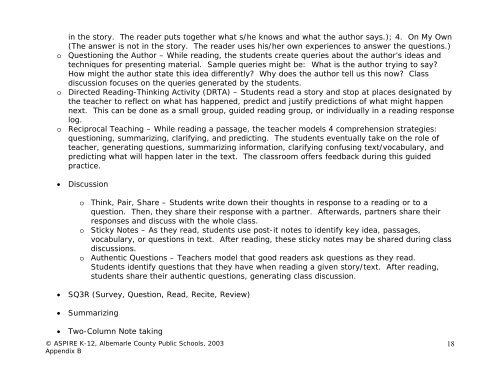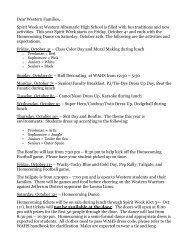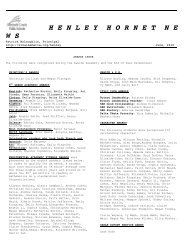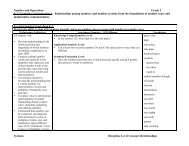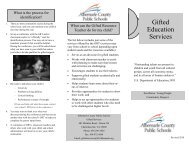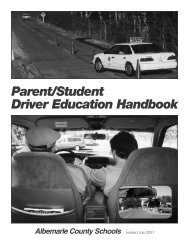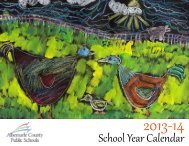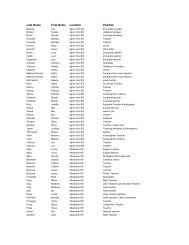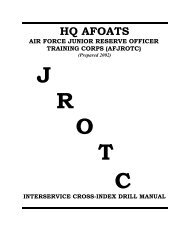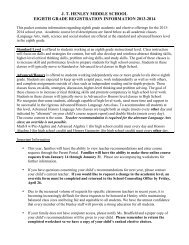Language Arts/English Curriculum Frameworks - Albemarle County ...
Language Arts/English Curriculum Frameworks - Albemarle County ...
Language Arts/English Curriculum Frameworks - Albemarle County ...
Create successful ePaper yourself
Turn your PDF publications into a flip-book with our unique Google optimized e-Paper software.
in the story. The reader puts together what s/he knows and what the author says.); 4. On My Own<br />
(The answer is not in the story. The reader uses his/her own experiences to answer the questions.)<br />
o Questioning the Author – While reading, the students create queries about the author’s ideas and<br />
techniques for presenting material. Sample queries might be: What is the author trying to say<br />
How might the author state this idea differently Why does the author tell us this now Class<br />
discussion focuses on the queries generated by the students.<br />
o Directed Reading-Thinking Activity (DRTA) – Students read a story and stop at places designated by<br />
the teacher to reflect on what has happened, predict and justify predictions of what might happen<br />
next. This can be done as a small group, guided reading group, or individually in a reading response<br />
log.<br />
o Reciprocal Teaching – While reading a passage, the teacher models 4 comprehension strategies:<br />
questioning, summarizing, clarifying, and predicting. The students eventually take on the role of<br />
teacher, generating questions, summarizing information, clarifying confusing text/vocabulary, and<br />
predicting what will happen later in the text. The classroom offers feedback during this guided<br />
practice.<br />
• Discussion<br />
o Think, Pair, Share – Students write down their thoughts in response to a reading or to a<br />
question. Then, they share their response with a partner. Afterwards, partners share their<br />
responses and discuss with the whole class.<br />
o Sticky Notes – As they read, students use post-it notes to identify key idea, passages,<br />
vocabulary, or questions in text. After reading, these sticky notes may be shared during class<br />
discussions.<br />
o Authentic Questions – Teachers model that good readers ask questions as they read.<br />
Students identify questions that they have when reading a given story/text. After reading,<br />
students share their authentic questions, generating class discussion.<br />
• SQ3R (Survey, Question, Read, Recite, Review)<br />
• Summarizing<br />
• Two-Column Note taking<br />
© ASPIRE K-12, <strong>Albemarle</strong> <strong>County</strong> Public Schools, 2003<br />
Appendix B<br />
18


